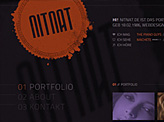Photo by Anastasiya Gepp from Pexels
Starting a fashion blog is an easy task. Making sure it is successful is a whole different game.
It is easy to find a lot of advice out there.
SEO optimization, site monetization, networking across social media platforms, content creation, and so on and so forth. These are all things you come across time and again when researching how to improve your blog.
But one of the most overlooked aspects of developing a successful blog is knowing how to define the right target audience. And if you have a fashion blog, well, that can be more complicated than you might think.
To start out, countless niches fall within the broad category of ‘fashion’.
Have you defined your niche and know what you want to blog about? If so, now you have to take the time to define who your target audience is.
How do you do that?
Well, here are some tips to get you started.
How to Define the Right Target Audience for Your Fashion Blog
First off, be realistic in defining your target audience. Are you writing for people who are just like you? Be careful not to make too many assumptions based on your own interests and lifestyle. The people who are interested in what you have to say may surprise you.
To get started, do some research. Take a look around on the internet and figure out who is joining in on the conversation you want to be leading.
1. Study the Followers You Already Have
If you already have a lot of followers on your Instagram, Pinterest, Facebook or YouTube, you’ve got the advantage. You can easily know who your audience is because you already have one.
Congratulations! You’re off to a great start. Now, get to know them.
Take some time to dig in deep and explore who, exactly, your followers are. Grab a notebook and jot down some stats as you sift through their profiles.
Are they mostly women? How old are they? Are they in their teens? 20’s? 30’s? Older? Do they have kids? Are they married? What work do they do?
Pay special attention to the most engaged followers you have – the ones that always comment on your posts or share your content. You could even go so far as to reach out to them for a quick chat or interview.
You might be surprised by the information you glean from taking a hard look at the people who already pay attention to what you have to say.
2. Find the Followers You Want to Attract
After you’ve studied your existing followers, what can you do? Now it’s time to take a look at the broader audience that already exists for your niche.
Use hashtags and keywords to listen in on the conversation that is already happening out there. Look at other forums that are out there on the web. Take note of who is engaging in these discussions.
A great place to start is Quora.com. On this site, it is easy to look up questions relevant to your particular niche.
For example, if you have a blog on vegan fashion, look up who is posting questions and who is doing the answering. (FYI – Quora is also a great place to get inspired for future content topics.)
Photo by Moose Photos from Pexels
You should also take a look at the other bloggers that you admire. Find the most successful blogs out there. Look at the folks who are engaging with their content.
Kara Person, a blogger and content editor for TopWritersReview, shares a piece of advice that worked well for her: “I especially recommend that you join a Facebook group or even a few ones. Sure, Facebook is not quite as popular as it used to be. But a LOT of people still use the platform. You shouldn’t disregard it as a source of valuable information.”
Basically, you want to know ‘who are these people?’ The ones that you want to read your blog.
Once You Know Who You Want to Write for, Then What?
Now is the time to take all that information you gathered in your market research and turn it into your target audience ‘persona’.
Create a profile of a particular audience member that you are writing for.
It might sound silly, but really, this is a great exercise.
This will help you keep your target audience constantly in mind while you work on your content. You have to know who you are writing for.
Keeping in mind who your audience is will help to set your blog apart from the rest of the fashion blogs out there. As you develop your blog, your posts will have a consistent style and tone that will define your site.
As a matter of fact, it’s essential to underline how important style and tone actually is when it comes to calibrating your content to your audience.
So How Do You Create A ‘Persona’?
First off, define the following details about your ideal reader. If you want, give them a name. Give them a face and everything!
A simple persona template by Venngage
Think about the following details about who they are and what their life is like:
- Are they male or female? (If both, make two prototype profiles!)
- How old are they?
- What’s their education level?
- Does it matter what ethnicity they are?
- What’s their income level?
- Do they have children?
- What do they do for a living?
- What social media do they use?
- What are their goals in life?
- What problems do they have?
- What other interests might they have?
So let’s go back to the vegan fashion blog example I made up. I am going to name my prototype ‘ideal reader’ Sara.
Sara is a woman who is in her mid-20s to mid-30s. She might have a kid or two. She’s married and a stay at home mom. She is college-educated and cares a lot about the environment.
She is middle class and most likely has an income that allows her to buy luxury-type goods based on her ethics and environmental attitudes.
Her goal is to be an example of healthy vegan living. She feels challenged by always having to find vegan or ethical alternatives to everything. She likes home decor, arts and crafts, and outdoor sports like running and biking.
Depending on what you discover in your research phase, you may realize that you have different types of ideal readers.
Photo by Elle Hughes from Pexels
For example, while investigating the web, I realized that I also needed a profile for ‘Jane’.
Jane is around the same age as Sara, but is single and has no kids. She is a professional and thinks innovation will save the planet.
You get the idea.
Based on your research, you may realize that the right target audience for your fashion blog is actually a fairly large demographic in the fashion market. That’s great because it gives you the room and flexibility to diversify the range of content you offer.
You may have been unintentionally limiting yourself!
Some of your content may resonate particularly strong with some of your readers and not so much with others.
But because of the varied content, there will always be something for everyone. This will keep your readers engaged and coming back for more.
Define Your Mission Statement
Having a blog is having a business. And no business is complete without a business plan and a mission statement.
Having a mission statement from the get-go can help you define who you want your target audience to be.
If your fashion blog is already established and you are trying to refine and improve it, identifying who your target audience actually is can help you redefine and polish your mission statement.
Your mission statement should clearly state:
- Who you are writing for
- What you want to help them to do
- How your blog will help them better than anyone else’s
For my imaginary vegan fashion blog, I came up with this as an example:
I am dedicated to educating and entertaining environmentally conscientious women. Women who want to look good and live according to their ethics. Through humor and solid research, my blog will help people discover vegan alternatives and options for all their fashion needs.
Conclusion
So there you have it.
Defining the right target audience for your fashion blog is not a complicated ordeal.
Sure, you will need to invest a bit of time and analytical thinking. It’s worth it though. The insights you gain from this exercise will be invaluable for the future success of your blog.
Understanding who your target audience is and what they want to know will let you open the creative floodgates. You will discover not only your ideal reader but a whole new world of potential content for your fashion blog.
Writing focused content with your targeted readers in mind will lead to more engagement on your blog, increased views, fan loyalty, and (hopefully) a jump in revenue.















